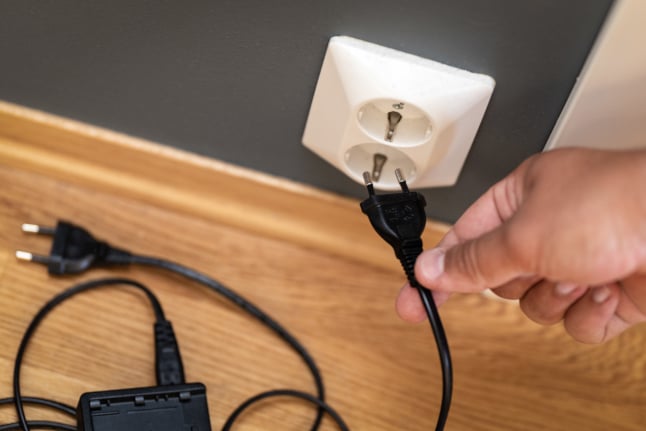First of all, if you’ve bought an apartment, or a house that is part of a housing association (bostadsrättsförening or BRF), you should find out which utilities are included in your monthly fee to the BRF (avgift). Ideally you would do this during the property hunt so that you can accurately compare different monthly costs, but if not, find out as soon as possible.
It’s common for heating to be included in the avgift, as well as water (check if that includes hot water too). Electricity is much less commonly included, so it’s likely you’ll need to sign your own contracts.
There are two parts to your electricity service: the grid (elnät) and the supply company (elbolag).
The electricity grid can’t be chosen; it depends on where you live. For example, in Stockholm the company Ellevio owns the grid, so you need to sign your grid contract (nätavtal) with them in order to get access to the electricity. You can find out which company owns the grid where you live on Nätområden.
If you’re moving within the same area and already have an agreement with the network, let them know your new address.
If you don’t sign this agreement, you’re at risk of moving into a new home with no electricity.

To sign the contract, you’ll need two numbers: the anläggningsID (an 18-digit number which you can find on the electricity meter, or by asking the previous owner) and the apartment number if you’re in an apartment. This is a four-digit number and should be in your paperwork from the move, or you can ask the previous owner or BRF. It could even be on your mailbox or front door.
The fee you pay to the grid will consist of two parts: a fixed subscription fee, and an extra amount based on the amount of energy used.
On top of that, you’ll pay a separate fee to a supply company.
When it comes to your supply company, you do have a choice. After signing your nätavtal you need to choose a supply company so that they can deliver electricity directly to your home. If you already have a contract that you’d like to keep, you can contact the supply company to get it transferred to your new address when you move.
If you don’t sign your own elavtal, the grid will choose a company for you automatically. This means you’ll still get electricity, but it’s unlikely to be the best price for you.

To choose your own electricity supplier, you can use comparison tools such as Compricer, Elbyte or Elskling. You’ll get a more accurate price estimate if you know roughly how much electricity you use per year, but otherwise you can give the size of your property and get a rough figure.
When choosing your electricity supplier, you can choose between a fixed price (you’ll pay the same amount per kilowatt-hour each month for a set time, so your fee depends entirely on how much electricity you use) or a variable rate (this means your kilowatt-hour price varies, based on how expensive the electricity is for the supplier which depends on factors like weather and supply and demand, so your overall price will vary more).
You can also choose an electricity supplier that uses renewable energy if you prefer. And if you live together with someone else, make sure the same person is named on both deals to avoid any problems.
Once you’ve signed both agreements (which can usually be done online if you have Mobile BankID), you should be good to go. Make sure to find out from both the grid and the supply company how and when you’ll be billed, for example whether you’ll need to make the payments yourself or if you can choose to set up direct debits (autogiro).



 Please whitelist us to continue reading.
Please whitelist us to continue reading.
Member comments